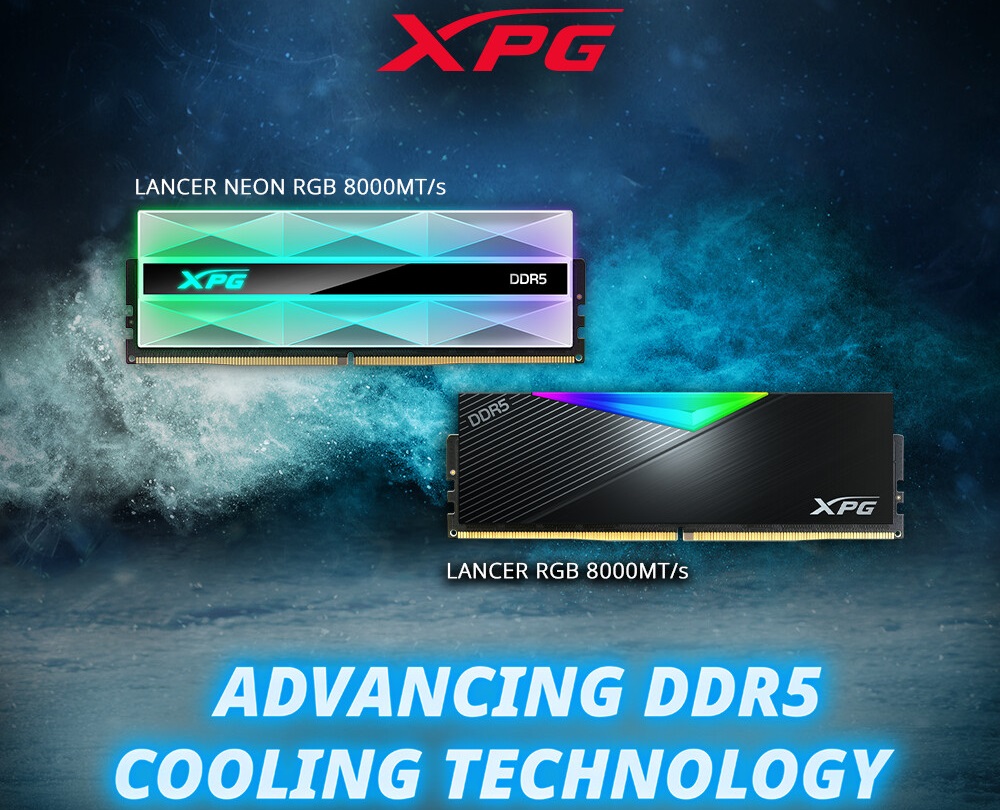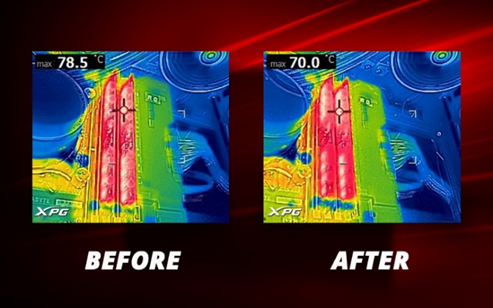
In a press release Adata has announced that from the second quarter of 2024 it will use a thermal coating technology on the PCB of its DDR5 memory modules. This coating is claimed to reduce temperatures by 8.5 degrees Celsius in Adata's own tests, and offer a heat dissipation efficiency of more than 10%. But, this new technology will not be available on all models.
Compatible XPG memory modules clocked at 8,000 MT/s or more, including the new Lancer Neon RGB and Lancer Neon RGB series, will be available with the thermal coating from the second quarter of 2024.
The company claims its PCB heat dissipation solution is in an optimized solder mask. Not only does the solder mask insulate, it also dissipates and conducts heat. A bold claim. Adata's PR states that it reduced overclocked DDR5 memory temperature by 8 degrees Celsius when compared to non-coated RAMs. To demonstrate this the memory and storage maker used a thermal camera on its DDR5 kits.

The images show a pair of Lancer Neon 8000MT/s. On the left are units with no thermal coating, on the right with. The left side pair are running at 78.5 degrees Celsius, while on the right, they are running at 70 degrees Celsius.
While it's good to improve upon any component's heat dissipation abilities, when compared to other core components, like CPUs cooling for memory kits is not seen as a priority. Modern memory kits typically have heatspreaders that are more for branding and RGB than cooling performance.
The use of a thermal coating technology could provide an alternative method to heatspreaders. Some may question if it makes a big enough difference to effectively prolong the product's lifespan.
In the press release, XPG states that it is prioritized the application of the thermal coating technology to overclocked DDR5 gaming memory running at 8000 MT/s or more. These modules will be officially unveiled at Computex 2024 (June 4 2024).







